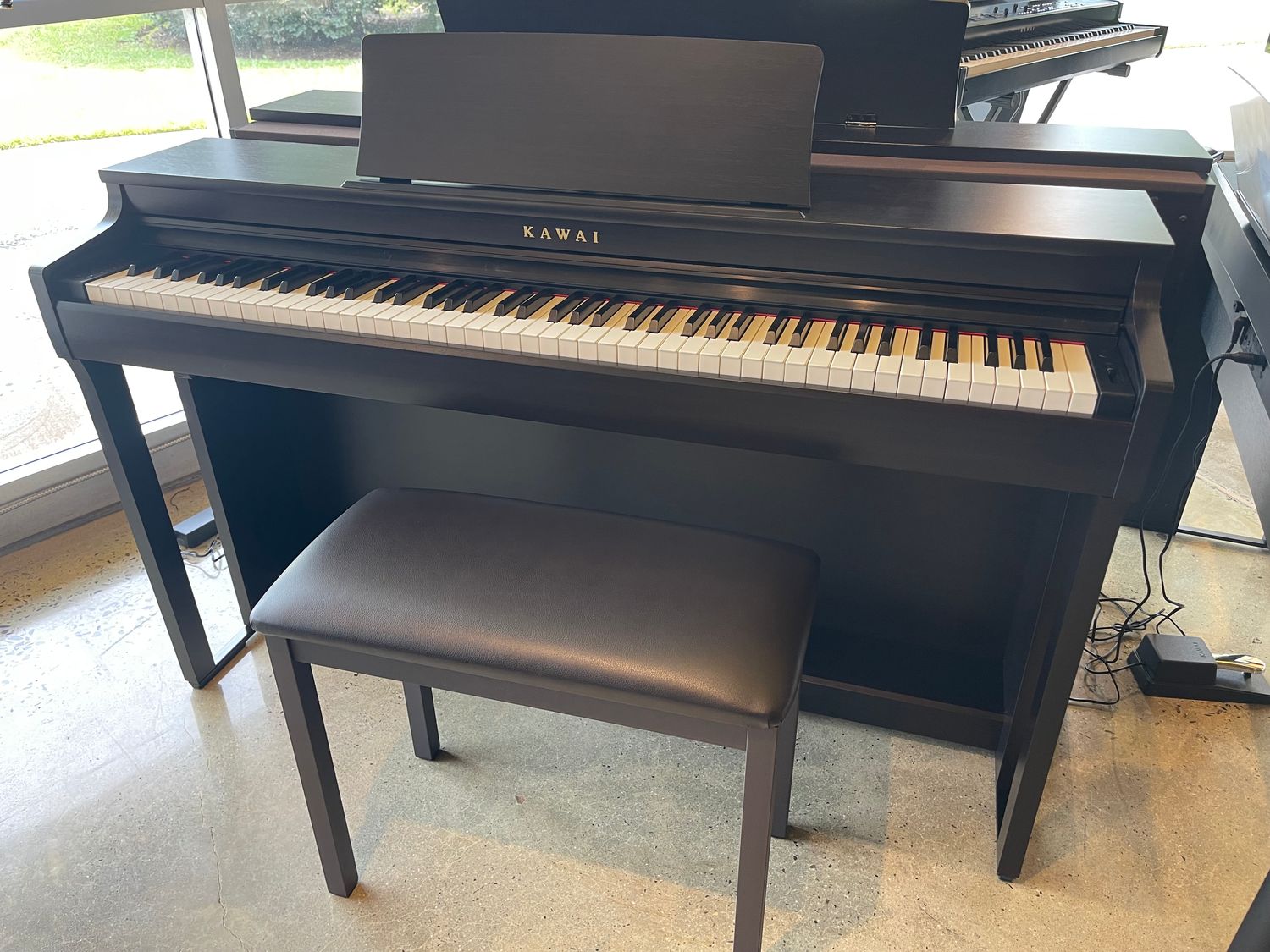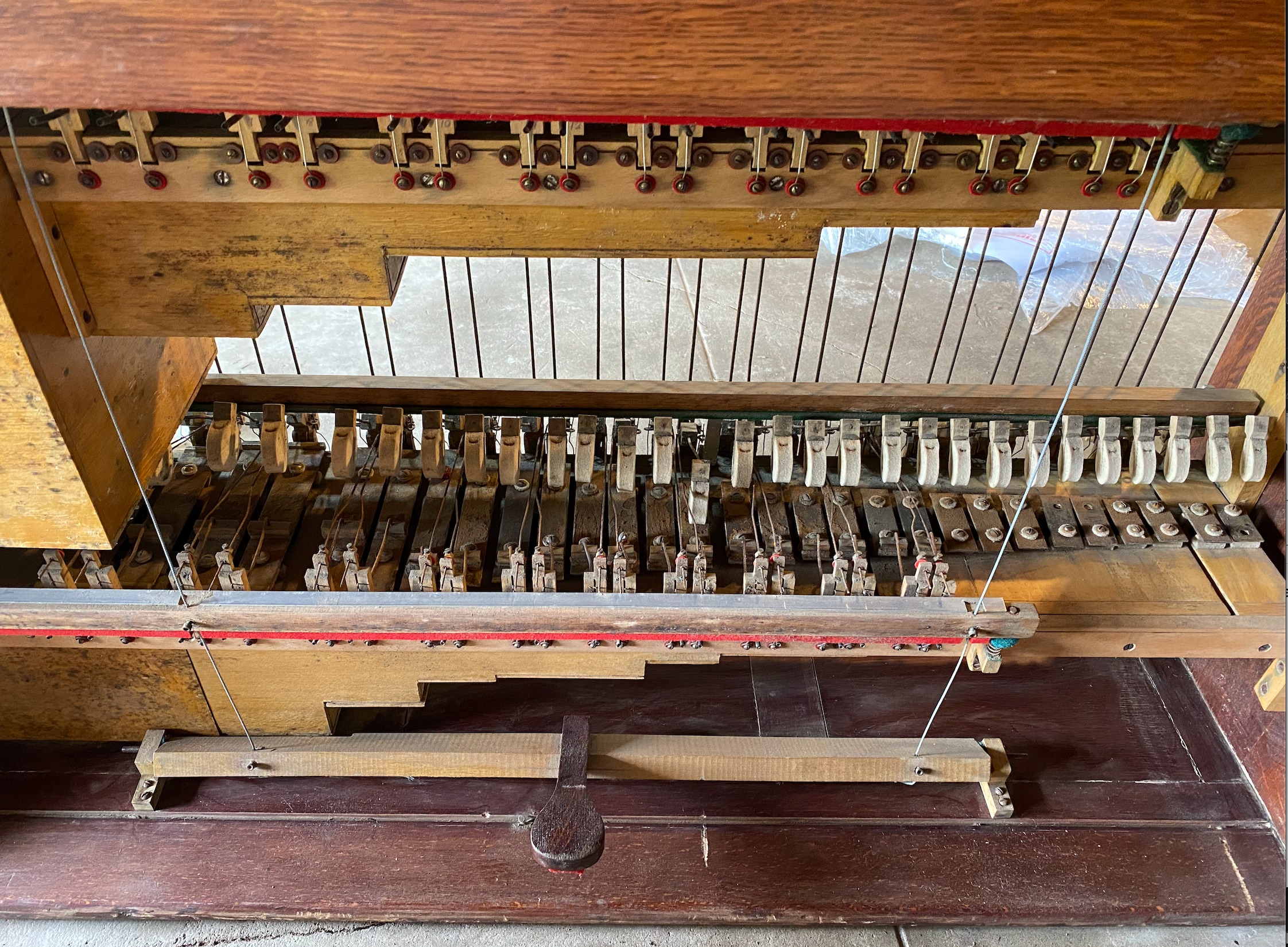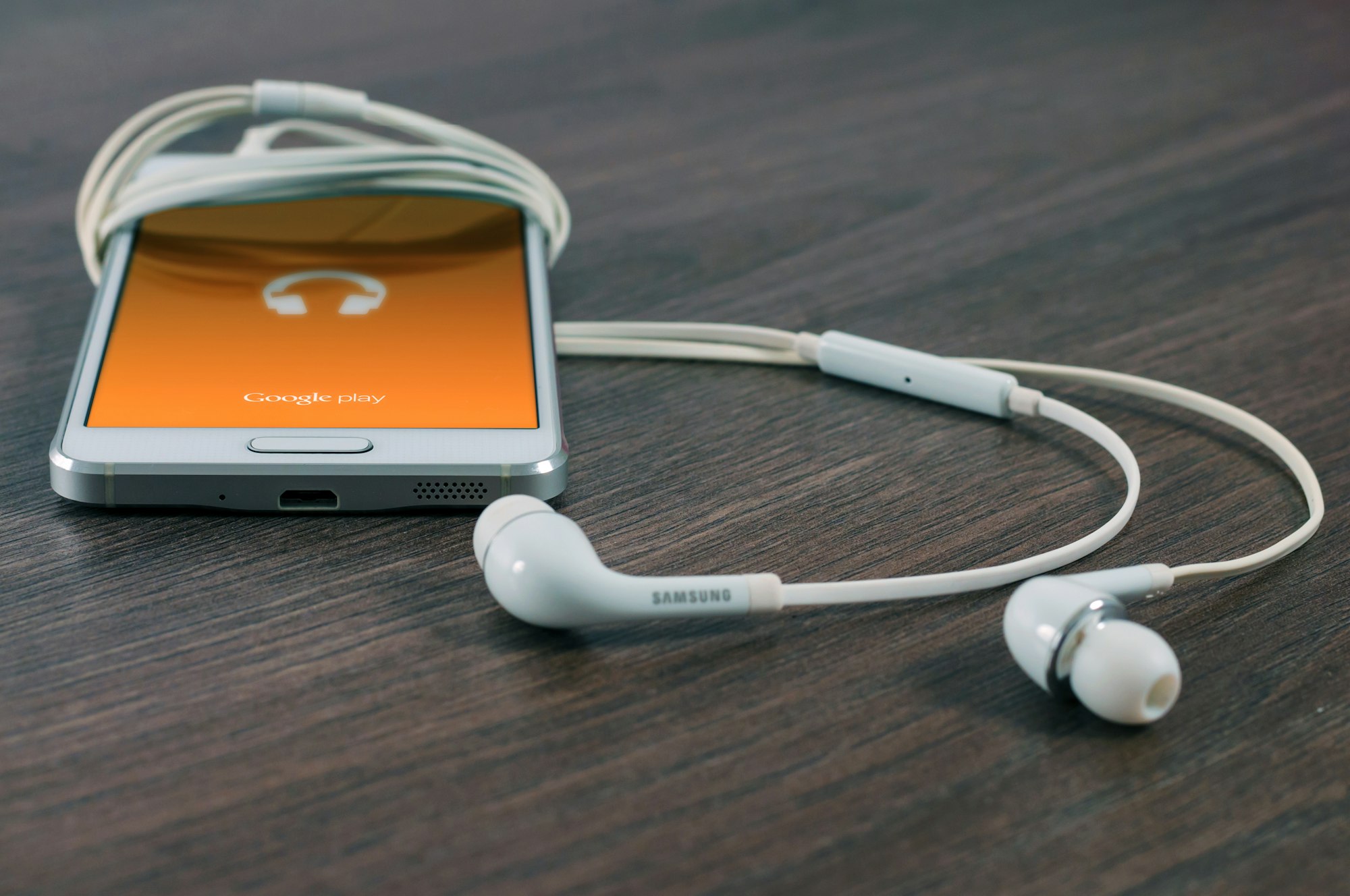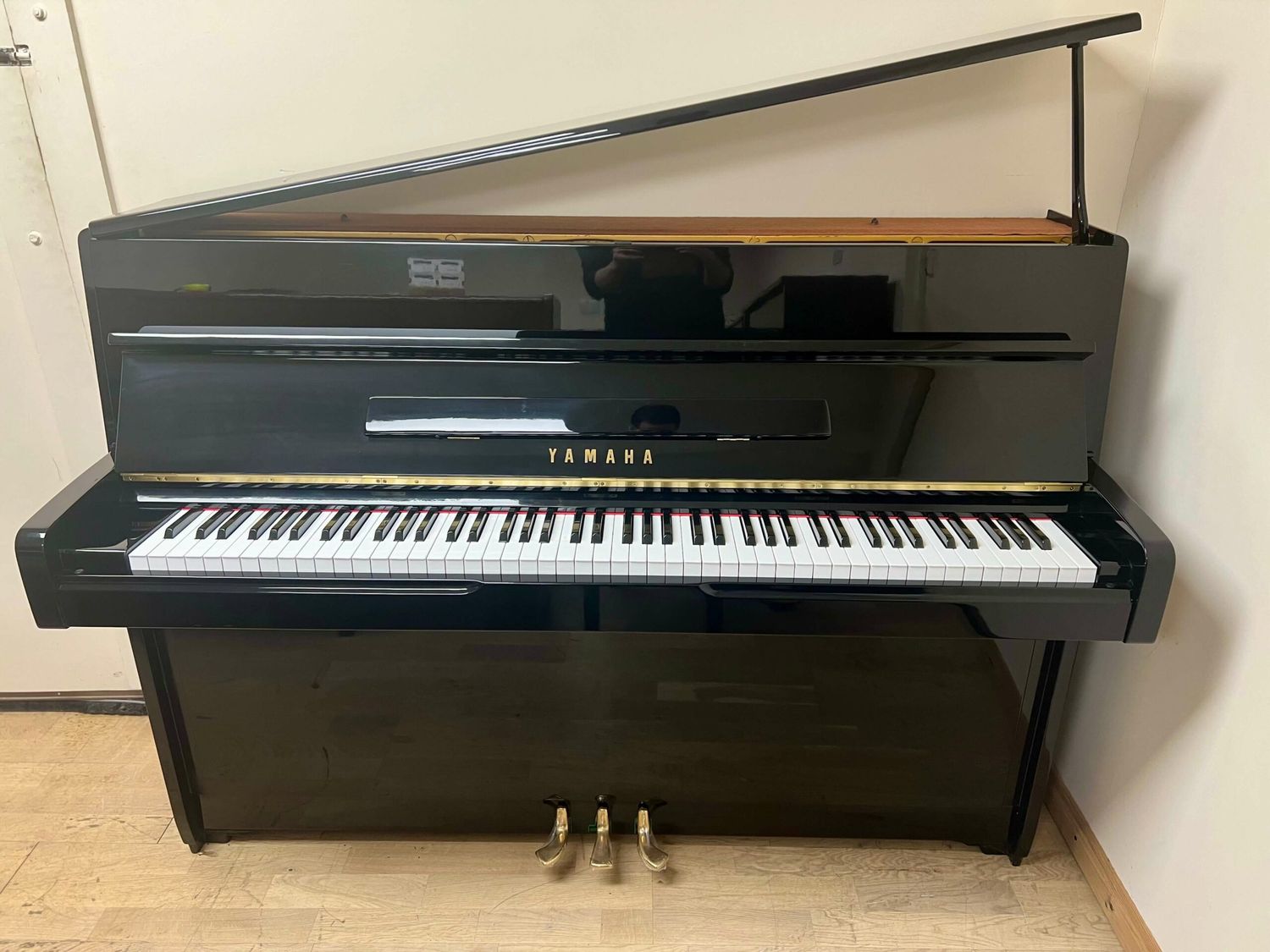Home>Instruments>Piano>What Is A Digital Piano


Piano
What Is A Digital Piano
Published: February 11, 2024
Discover the features and benefits of digital pianos, including their versatility and ease of use. Learn why a digital piano is a great choice for both beginners and experienced musicians. Explore the world of digital pianos and find the perfect instrument for your musical journey.
(Many of the links in this article redirect to a specific reviewed product. Your purchase of these products through affiliate links helps to generate commission for AudioLover.com, at no extra cost. Learn more)
Table of Contents
- The Evolution of Musical Mastery: Understanding Digital Pianos
- From Analog to Digital: Tracing the Origins of Digital Pianos
- Unveiling the Inner Workings of Digital Pianos
- Decoding the Contrasts: Digital Pianos Versus Acoustic Pianos
- Unveiling the Virtues: Embracing the Advantages of Digital Pianos
- Navigating the Limitations: Understanding the Disadvantages of Digital Pianos
- Harmonizing Harmony: Navigating the Selection of Digital Pianos
- Harmony Unbound: Embracing the Essence of Digital Pianos
Introduction
The Evolution of Musical Mastery: Understanding Digital Pianos
As technology continues to revolutionize every aspect of our lives, the world of music is no exception. One of the most notable innovations in the realm of musical instruments is the digital piano. A digital piano is a modern electronic musical instrument designed to replicate the sound and feel of a traditional acoustic piano while offering a myriad of additional features and benefits.
Whether you are a seasoned pianist, an aspiring musician, or simply someone with a passion for music, understanding the essence of digital pianos can significantly enrich your musical journey. In this comprehensive guide, we will delve into the history, functionality, advantages, and considerations for selecting the perfect digital piano to suit your musical aspirations.
Join us as we embark on a captivating exploration of the evolution and intricacies of digital pianos, shedding light on their profound impact on the world of music and the unparalleled opportunities they offer to musicians of all levels.
History of Digital Pianos
From Analog to Digital: Tracing the Origins of Digital Pianos
The inception of digital pianos can be traced back to the mid-20th century when technological advancements began to intersect with the world of music. The quest to replicate the rich, resonant sound and authentic touch of acoustic pianos in a more versatile and portable form spurred the development of digital pianos.
In 1956, the creation of the first electronic piano, the “RCA Mark I,” marked a pivotal moment in the evolution of keyboard instruments. This groundbreaking innovation laid the foundation for subsequent advancements in digital piano technology. Throughout the 1970s and 1980s, pioneering companies such as Yamaha, Roland, and Kawai made significant strides in refining the sound quality, keyboard action, and overall performance of digital pianos.
By the 1990s, digital pianos had evolved to emulate the touch and response of acoustic pianos with remarkable accuracy, thanks to the incorporation of weighted keys and advanced sampling technology. The integration of features such as polyphonic sound, realistic instrument voices, and digital effects further elevated the appeal of digital pianos among musicians and enthusiasts.
Fast forward to the present day, and digital pianos have become indispensable tools for musicians, educators, and performers alike. The marriage of cutting-edge technology and timeless musical artistry has positioned digital pianos as versatile instruments that not only replicate the sound of acoustic pianos but also offer an array of innovative capabilities, including recording, connectivity, and customization options.
With a rich tapestry of technological advancements and a commitment to delivering unparalleled musical experiences, digital pianos continue to shape the musical landscape, inspiring creativity and enabling individuals to embark on transformative musical journeys.
How Digital Pianos Work
Unveiling the Inner Workings of Digital Pianos
At the heart of a digital piano lies a sophisticated blend of technology and craftsmanship, meticulously engineered to replicate the nuanced intricacies of an acoustic piano while offering a host of modern functionalities. Understanding the inner workings of digital pianos unveils the remarkable fusion of artistry and innovation that defines these instruments.
Key to the operation of a digital piano is the use of sampled sounds from high-quality acoustic pianos. Advanced recording techniques capture the distinctive tonal characteristics of acoustic pianos across the entire range of notes, preserving the nuances of each key’s timbre and resonance. These samples form the basis for generating the sound output of a digital piano, ensuring a faithful reproduction of the acoustic piano’s rich, expressive tones.
One of the defining features of digital pianos is their use of weighted or graded hammer-action keys. This emulation of the feel and response of acoustic piano keys enhances the playing experience, providing pianists with a sense of authenticity and control akin to that of a traditional piano. The integration of velocity-sensitive keys further adds to the realism, allowing for dynamic expression and articulation in performance.
Furthermore, digital pianos leverage advanced signal processing and sound synthesis technologies to recreate the reverberation, resonance, and sustain characteristic of acoustic pianos. This attention to detail in replicating the acoustic piano’s natural sound behavior contributes to the immersive and lifelike playing experience offered by digital pianos.
Additionally, the incorporation of digital interfaces and connectivity features enables digital pianos to offer a diverse array of functions, including MIDI compatibility, recording capabilities, built-in metronomes, and a variety of instrumental sounds beyond the piano. These features empower musicians to explore new horizons in music composition, performance, and recording, expanding the creative potential of the instrument.
By harmonizing the timeless artistry of acoustic pianos with the boundless possibilities of modern technology, digital pianos stand as a testament to the seamless integration of tradition and innovation, enriching the musical landscape and inspiring pianists to reach new heights of artistic expression.
Differences Between Digital Pianos and Acoustic Pianos
Decoding the Contrasts: Digital Pianos Versus Acoustic Pianos
While both digital pianos and acoustic pianos share the common goal of producing beautiful music, they diverge in their underlying mechanisms, construction, and performance attributes. Understanding the distinctions between these two types of pianos is essential for aspiring pianists and enthusiasts seeking to make an informed choice that aligns with their musical preferences and lifestyle.
- Sound Production: One of the fundamental disparities between digital and acoustic pianos lies in the generation of sound. Acoustic pianos rely on hammers striking strings to produce sound, resulting in a rich, resonant tone that emanates from the instrument’s wooden body. In contrast, digital pianos utilize sampled sounds and electronic amplification to reproduce the timbre and nuances of acoustic pianos, offering versatility in sound production and the ability to replicate various instrument voices.
- Action and Touch: The action and touch of a piano refer to the responsiveness and feel of the keys when played. Acoustic pianos feature weighted hammers and a mechanical action that offers tactile feedback and nuanced expression. Digital pianos emulate this tactile experience through weighted or graded hammer-action keys, providing a similar touch and response to acoustic pianos while offering adjustable touch sensitivity to accommodate individual playing styles.
- Maintenance and Durability: Acoustic pianos require regular tuning and maintenance to uphold their optimal performance and sound quality, as changes in humidity and temperature can affect their wooden components and tuning stability. Digital pianos, on the other hand, are generally maintenance-free and immune to environmental factors, offering consistent tuning and durability over time.
- Portability and Space: Digital pianos are inherently more portable and space-efficient than acoustic pianos, making them ideal for musicians who require mobility or have limited living space. Their compact and lightweight design, coupled with the option for headphone connectivity, enables practice and performance in diverse environments without compromising sound quality.
- Technological Features: Digital pianos boast an array of technological features not found in acoustic pianos, including built-in metronomes, recording capabilities, digital effects, instrument sound customization, and connectivity options such as MIDI and USB. These features expand the creative potential of digital pianos and cater to modern musical needs.
By unraveling the disparities between digital and acoustic pianos, individuals can make an informed decision based on their musical preferences, lifestyle, and artistic aspirations, ensuring a harmonious synergy between their chosen instrument and their creative journey in the realm of music.
Advantages of Digital Pianos
Unveiling the Virtues: Embracing the Advantages of Digital Pianos
Digital pianos encapsulate a myriad of advantages that cater to the diverse needs and aspirations of musicians, educators, and enthusiasts. These modern instruments offer a compelling array of features and capabilities that set them apart from their acoustic counterparts, elevating the musical experience and empowering individuals to explore new dimensions of creativity and expression.
- Sound Versatility: Digital pianos provide a broad spectrum of instrumental sounds beyond the traditional piano, including strings, organs, synths, and more. This versatility enables musicians to diversify their repertoire and experiment with diverse musical genres and styles.
- Portability and Space Efficiency: With their compact and lightweight design, digital pianos are highly portable and well-suited for musicians who require mobility or have limited space. Their ability to operate on battery power further enhances their portability, allowing for musical expression in various settings.
- Headphone Connectivity: The option for headphone connectivity in digital pianos facilitates private practice and immersive playing experiences without disturbing others, making them ideal for late-night rehearsals or shared living spaces.
- Volume Control and Digital Effects: Digital pianos offer precise volume control and a range of digital effects, allowing musicians to tailor their sound and ambiance to suit different performance environments and musical arrangements.
- Recording and Connectivity: Many digital pianos feature built-in recording capabilities and connectivity options such as MIDI and USB, enabling musicians to capture their performances, integrate with music software, and collaborate with other artists seamlessly.
- Maintenance-Free Operation: Unlike acoustic pianos, digital pianos require minimal maintenance and are unaffected by changes in temperature and humidity, offering consistent performance and tuning stability over time.
- Practice Tools and Educational Features: Digital pianos often incorporate educational features such as built-in metronomes, accompaniment styles, and learning modes, providing valuable tools for students and educators to enhance their musical skills and understanding.
The amalgamation of these advantages positions digital pianos as versatile and empowering instruments that cater to the evolving needs and aspirations of musicians in the contemporary musical landscape. Whether used for performance, practice, composition, or education, digital pianos stand as a testament to the convergence of tradition and innovation, enriching the musical journey of individuals across the globe.
Disadvantages of Digital Pianos
Navigating the Limitations: Understanding the Disadvantages of Digital Pianos
While digital pianos offer a wealth of innovative features and conveniences, it is essential to acknowledge the inherent limitations that accompany these modern instruments. By recognizing these drawbacks, musicians and enthusiasts can make informed decisions and mitigate potential challenges in their musical pursuits.
- Tactile Feedback: Despite advancements in key action and touch sensitivity, some pianists may find that digital pianos do not fully replicate the tactile feedback and nuanced response of acoustic pianos, particularly in the realm of advanced techniques and expressive playing.
- Sound Reproduction: While digital pianos excel in versatility, the reproduction of acoustic piano sound, including the complex interplay of harmonics and resonances, may not fully match the organic richness and depth of acoustic instruments.
- Dependency on Power and Electronics: Digital pianos rely on electronic components and power sources, making them susceptible to malfunctions, technical issues, and the need for consistent power supply, which can pose challenges in certain performance or practice settings.
- Long-Term Value and Obsolescence: The rapid pace of technological advancement may render certain digital piano models outdated over time, potentially impacting their long-term value and compatibility with evolving software and connectivity standards.
- Environmental Impact: The production and disposal of electronic components in digital pianos contribute to environmental concerns, including electronic waste and energy consumption, prompting considerations for sustainable practices in the music industry.
- Emulation of Acoustic Characteristics: While digital pianos strive to emulate the acoustic piano experience, including pedal response, sympathetic resonance, and tonal subtleties, purists may discern disparities in the faithful reproduction of these nuanced acoustic attributes.
By acknowledging the limitations of digital pianos, individuals can approach their musical endeavors with a balanced perspective, leveraging the strengths of these instruments while being mindful of potential challenges. Through informed decision-making and a nuanced understanding of the musical landscape, musicians can navigate these limitations and harness the transformative potential of digital pianos in their pursuit of artistic expression and musical excellence.
Choosing the Right Digital Piano
Harmonizing Harmony: Navigating the Selection of Digital Pianos
Amidst the diverse array of digital pianos available in today’s market, selecting the ideal instrument that aligns with your musical aspirations, preferences, and practical needs requires thoughtful consideration and informed decision-making. By delving into the essential factors that define the suitability of a digital piano, individuals can embark on a harmonious journey of musical discovery and expression.
- Key Action and Touch Sensitivity: Assess the key action and touch sensitivity of digital pianos to ensure that they resonate with your playing style and provide the desired level of responsiveness and expression.
- Sound Quality and Sampling Technology: Evaluate the sound quality and sampling technology employed in digital pianos, focusing on the authenticity and richness of acoustic piano tones, as well as the versatility of additional instrument voices and sound effects.
- Portability and Space Considerations: Consider the portability and space efficiency of digital pianos, particularly if you require mobility or have limited living space, ensuring that the instrument aligns with your practical needs.
- Technological Features and Connectivity: Explore the range of technological features and connectivity options offered by digital pianos, including recording capabilities, educational tools, MIDI compatibility, and connectivity with external devices and software.
- Long-Term Value and Durability: Assess the long-term value and durability of digital pianos, taking into account factors such as build quality, warranty coverage, software support, and the potential for future upgrades or obsolescence.
- User Interface and Ergonomics: Evaluate the user interface, control layout, and overall ergonomics of digital pianos to ensure intuitive operation, accessibility of features, and a comfortable playing experience.
- Artistic Expression and Musical Goals: Align the features and capabilities of digital pianos with your artistic expression and musical goals, considering how the instrument can facilitate your creative vision and exploration of diverse musical genres and styles.
By meticulously evaluating these factors and engaging in hands-on exploration of digital pianos, individuals can make an informed and resonant choice that harmonizes with their musical journey. Whether seeking a performance-oriented instrument, a practice companion, or a versatile creative tool, the process of choosing the right digital piano unfolds as a symphony of personal expression and musical fulfillment.
Conclusion
Harmony Unbound: Embracing the Essence of Digital Pianos
In the tapestry of musical innovation and artistic expression, digital pianos stand as a testament to the boundless synergy of tradition and technology, enriching the musical landscape and empowering individuals to embark on transformative journeys of creativity and discovery. From their inception to the present day, digital pianos have transcended the realms of emulation and evolved into versatile instruments that resonate with the diverse aspirations and lifestyles of musicians, educators, and enthusiasts worldwide.
The evolution of digital pianos mirrors the relentless pursuit of excellence and the unwavering commitment to delivering authentic, immersive musical experiences. As these modern instruments continue to weave their harmonious melodies into the fabric of music, they offer a wealth of advantages, including sound versatility, portability, technological innovations, and educational tools, fostering a dynamic and inclusive platform for musical exploration and expression.
While acknowledging the inherent limitations of digital pianos, individuals are empowered to navigate these considerations with discernment and mindfulness, embracing the virtues of these instruments while being cognizant of potential challenges. By understanding the nuanced interplay of sound production, tactile feedback, and technological integration, musicians can harness the transformative potential of digital pianos, leveraging their strengths to amplify their artistic vision and musical prowess.
As individuals embark on the journey of choosing the right digital piano, they are invited to harmonize their musical aspirations with the essential factors that define a resonant and fulfilling musical experience. Through the careful evaluation of key action, sound quality, portability, technological features, and alignment with artistic expression, the selection process unfolds as a symphony of personal resonance and musical fulfillment.
Ultimately, the essence of digital pianos transcends the realm of mere instruments, resonating as catalysts for artistic expression, vessels of musical storytelling, and companions in the pursuit of creative excellence. As musicians and enthusiasts embrace the virtues, navigate the limitations, and align with the harmonious selection of digital pianos, they embark on a boundless journey of musical mastery, where every note becomes a testament to the timeless synergy of tradition and innovation.











